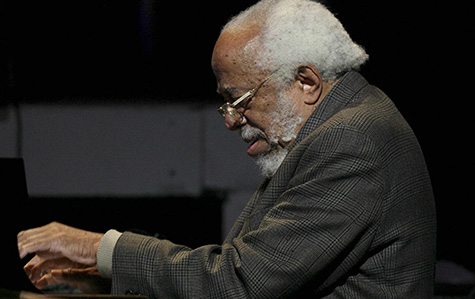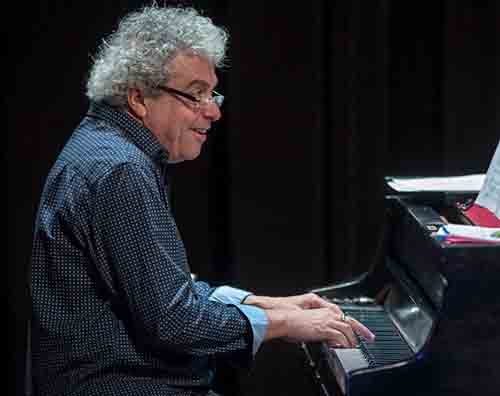
Tuomo Uusitalo
Tuomo is an award-winning pianist, composer, arranger and educator. Having released two albums as a leader, he has established himself in the New York jazz scene and continues touring internationally both as a leader as well as sideman.
Live Seminar Resources
Live Seminar Resources
PDF Downloads
- Important Left Hand Voicings
Join PianoGroove Pro to access all downloads and learning resources.
Download theory supplements, midi files, chord changes and full note-for-note transcriptions of every lesson.
- There Will Never Be Another You - Transcription
Join PianoGroove Pro to access all downloads and learning resources.
Download theory supplements, midi files, chord changes and full note-for-note transcriptions of every lesson.
Seminar Description
Seminar Description
Left Hand Voicings Masterclass
Welcome to this in-depth masterclass on left-hand voicings for jazz piano. This session explores a structured approach to left-hand harmony, focusing on rootless voicings, three-note voicings, and advanced color tones. By the end of this lesson, you’ll have a clear framework for applying left-hand voicings in various musical contexts, whether accompanying a band, playing solo, or comping in a jazz trio setting.
Understanding Left-Hand Voicings
Left-hand voicings are a fundamental part of jazz piano playing, providing harmonic support while allowing for melodic freedom in the right hand. In jazz, left-hand voicings are often rootless, meaning they contain only essential chord tones—typically the 3rd and 7th, along with extensions like the 9th or 13th. This approach assumes that the bass player will provide the root, or that the pianist will imply it through context.
The Role of 3rd and 7th
When building left-hand voicings, the most crucial tones are the 3rd and 7th of each chord. These two notes define whether a chord is major, minor, or dominant and determine the direction of voice leading. By practicing these two notes in all keys, you’ll develop a strong harmonic foundation for comping and arranging.
3-Note Left-Hand Voicings
One of the simplest ways to start using left-hand voicings is by applying three-note structures. These consist of:
- The root (optional in rootless voicings)
- The 3rd
- The 7th
For example, in a II-V-I progression in C major:
- D-7 (D, F, C)
- G7 (G, B, F)
- Cmaj7 (C, E, B)
By practicing these voicings in different inversions, pianists gain flexibility and control over their harmonic choices.
Adding Color with 9ths and 13ths
To create richer textures, we can add extensions to our left-hand voicings:
- 9ths (natural, flat, or sharp): Adds depth to minor, dominant, and major chords.
- 13ths: Often used in dominant chords, adding a sophisticated jazz sound.
- Flat 5 and Sharp 5 (Altered Extensions): Create tension in dominant chords, ideal for resolving to minor or major tonics.
For example, a G7 chord can be voiced with different extensions:
- G7 (B, F) – Basic
- G7 (B, F, A) – Adding the 13th
- G7 (B, F, Ab) – Flat 13th for a darker sound
- G7 (B, F, A, D) – Fully extended
Using the Same Voicing Across Multiple Chords
A powerful concept in jazz piano is reusing the same voicing for different harmonic functions. A single voicing can serve as:
- A minor 6 chord
- A dominant 7th chord (altered or unaltered)
- A minor 7b5 chord
- A major 7#11 chord
For example, a G-6 voicing (G, Bb, E, A) can also function as:
- Bbmaj7#11 (Bb, D, E, A)
- E-7b5 (E, G, Bb, D)
- C9 (C, E, Bb, D)
Understanding these relationships allows for more fluid and expressive playing.
Applying Left-Hand Voicings to Jazz Standards
To integrate these voicings into real-world playing, apply them to jazz standards like "There Will Never Be Another You."
- Identify the II-V-I progressions.
- Use three-note voicings for comping.
- Experiment with extensions and color tones.
- Listen to professional recordings to hear how these voicings are used in context.
By combining these techniques, you can create sophisticated harmonic textures that enhance both solo and ensemble playing.
5 Practice Tips for Mastering Left-Hand Voicings
- Practice in All Keys: Work through II-V-I progressions using both inversions of rootless voicings.
- Use a Metronome: Keep steady time while practicing voicings in different tempos.
- Play Along with Recordings: Transcribe and analyze left-hand voicings from professional pianists.
- Experiment with Extensions: Add 9ths, 13ths, and alterations to develop harmonic fluency.
- Apply Voicings to Repertoire: Choose a jazz standard and use left-hand voicings while playing the melody or improvising.
Mastering left-hand voicings is an essential skill for jazz pianists. By systematically practicing these concepts, you’ll develop a strong harmonic foundation that supports both solo and group playing. Keep experimenting with different textures, and enjoy the process of refining your sound!








Please provide the transcripts for this session.
Hi Elwin,
Thanks for letting me know about this.
Please see the “Seminar Resources” box in the bottom right had corner of the page. I have added 4 PDF files. You need to click the “Show All Seminar Resources” button to see all 4 PDFs.
Enjoy the class and let me know if I can be of further assistance.
Cheers,
Hayden
Why on the d minor flat 5 chord in the transcription are you sharping the F making it a dominant chord. Is this an error? You do it on a couple of chords. Thanks
Hi edwin1, thanks for writing!
Often in the transcription, instead of Dm7b5 I often played D7, as I treated the D chord as a dominant to the next, G7. That’s why I had the F# in the voicing.
This is a very common way to easily variate harmony, and create more movement with 2 dominants in a row.
Please let me know if you want further explanation, I’m happy to help!
all the best,
-Tuomo